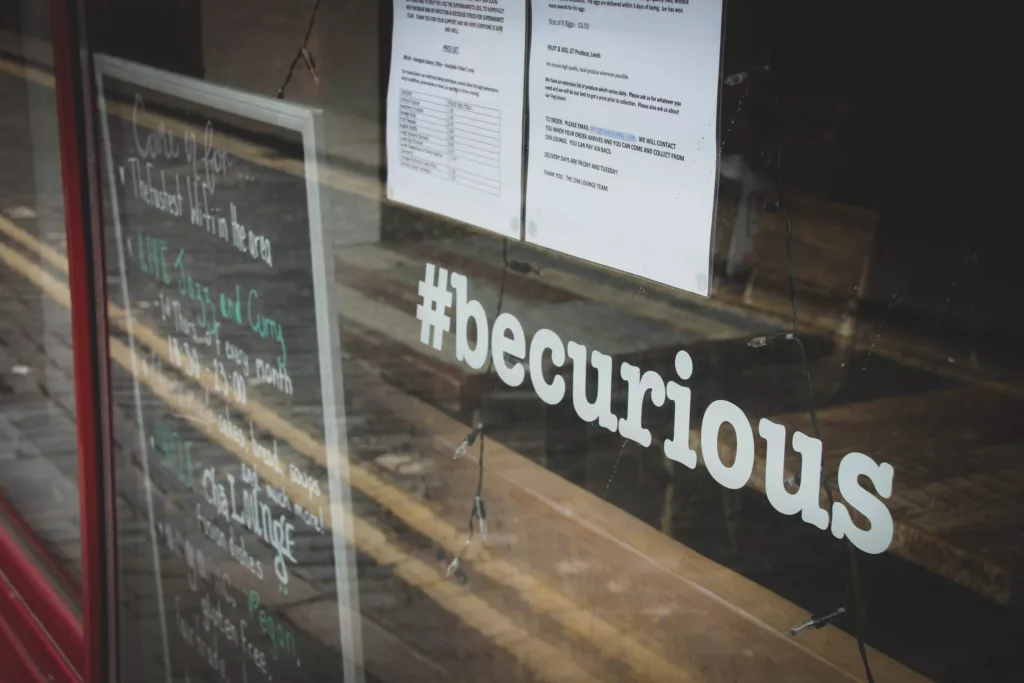In a world increasingly dominated by digital communication, the art of face-to-face conversation is undergoing a revival. The first encounter, whether in a professional, romantic, or social setting, hinges significantly on the questions we ask.
This article explores how asking the right questions can not only break the ice but also pave the way for meaningful and lasting connections.
The Power of First Impressions
First impressions are pivotal in setting the tone for any conversation. Within moments of meeting, the questions we ask can either open doors to deeper understanding or reinforce superficial barriers.
Superficial questions are often those that invite generic responses and do little to reveal the personality or thoughts of the individual.
For example:
- “What do you do for a living?”
- “How’s the weather been treating you?”
- “Are you from around here?”
These questions, while harmless, are often overused and do not encourage the respondent to share meaningful information about themselves.
Transitioning to Deeper, More Engaging Questions
In contrast, thoughtfully crafted questions can transform a conversation from mundane to memorable. They demonstrate a genuine interest in the other person and encourage a more open, authentic exchange.
Examples include:
- Instead of asking about their job, inquire about their passions: “What’s something you’ve worked on recently that you’re really excited about?”
- Rather than commenting on the weather, delve into experiences: “What’s an outdoor activity that you love and why?”
- Instead of asking if they’re local, explore their background in a meaningful way: “Can you share a story or tradition from your hometown that left a lasting impression on you?”
Good Questions: The Key to Unlocking Real Connections
Good questions are the catalysts for meaningful conversation. They transcend the ordinary and probe deeper into a person’s experiences, thoughts, and feelings. Unlike superficial questions, good questions invite storytelling, personal reflection, and shared understanding.
Characteristics of Good Questions
- Open-Ended: They allow for more than just yes-or-no answers, encouraging a detailed response.
- Thought-Provoking: These questions challenge the respondent to think and reflect.
- Empathetic: They show a genuine interest in the other person’s experiences and feelings.
- Context-Aware: Good questions are appropriate to the situation and the relationship between the conversationalists.
Examples of Good Questions
- For Personal Insights: “What’s an experience that has shaped who you are today?”
- For Shared Interests: “What’s a hobby or activity you love, and what draws you to it?”
- For Values and Beliefs: “What’s one belief you hold strongly, and how has it influenced your life choices?”
- For Aspirations: “If you could achieve one major goal in the next year, what would it be and why?”
- For Reflections on Success and Challenges: “Can you share a moment of success or challenge that has been significant to you?”

Useless Questions and How to Avoid Them
Useless questions, in the context of meaningful conversation, are those that stifle deeper engagement or lead to dead-end responses. They often manifest as either overly generic, closed-ended, or irrelevant to the situation. Recognizing and avoiding these types of questions can significantly enhance the quality of a conversation.
Characteristics of Useless Questions
- Closed-Ended: These questions can be answered with a simple ‘yes’ or ‘no’, leaving little room for elaboration.
- Cliché or Overused: Questions like “How are you?” often elicit automatic, unthoughtful responses.
- Too Personal or Intrusive: Questions that invade privacy can make the conversation uncomfortable.
- Irrelevant to the Context: Questions that are out of place with the setting or the relationship between people.
Examples of Useless Questions and Alternatives
- Instead of “How are you?”, which is often rhetorical, ask “What’s something interesting that happened to you this week?”
- Replace “Do you come here often?” with “What drew you to this event/place today?”
- Avoid overly prying questions like “Why are you single?” Instead, try “What’s something you’re really passionate about these days?”
- Instead of “Is your job stressful?”, ask “What’s a challenge you’ve faced at work recently, and how did you handle it?”
Strategies to Avoid Useless Questions
- Prepare in Advance: Think about some interesting questions before entering a conversation.
- Be Observant: Use cues from the environment or the person’s appearance to formulate relevant questions.
- Focus on Positivity and Interest: Frame questions that are likely to elicit positive experiences or passion.
- Adapt and Pivot: If a question falls flat, be ready to change the subject gracefully.
Practical Scenarios and Question-Asking Strategies
Conversations vary greatly depending on the context. Understanding the nuances of different settings can help in choosing the right questions to ask. This section provides practical scenarios and tailored question-asking strategies for each.
1. Professional Networking Events
- Objective: Establish professional connections and learn about industry trends.
- Effective Questions:
- “What’s the most exciting project you’re working on right now?”
- “How do you see our industry evolving in the next few years?”
- “What’s one piece of advice you wish you’d known earlier in your career?”
2. First Dates or Social Gatherings
- Objective: Build personal connections and find common interests.
- Effective Questions:
- “What’s a hobby or activity that brings you joy, and how did you get into it?”
- “Is there a particular experience or adventure that has been a highlight for you recently?”
- “What’s a movie or book that you found really impactful, and why?”
3. Family Reunions or Gatherings with Friends
- Objective: Strengthen bonds and catch up on life events.
- Effective Questions:
- “What’s a memorable moment you’ve had since we last met?”
- “Are there any new passions or interests you’ve discovered recently?”
- “How have you found your life has changed in the past year?”
4. Job Interviews
- Objective: Impress the interviewer and show your suitability for the role.
- Effective Questions:
- “What qualities do you value most in team members here?”
- “Can you describe a typical day in this role?”
- “What are the key challenges that someone in this position might face?”
5. Casual Acquaintances or New Meetups
- Objective: Break the ice and lay the groundwork for a potential friendship.
- Effective Questions:
- “What’s something you’re looking forward to in the coming weeks?”
- “Have you taken up any new interests or hobbies lately?”
- “What’s a local spot you’d recommend for someone new to the area?”

Beyond the Questions – The Role of Body Language and Tone
While the questions you ask are crucial in shaping a conversation, equally important are the non-verbal cues and the tone of voice you use. These elements can reinforce the sincerity and interest conveyed through your questions, making the interaction more engaging and authentic.
Understanding Body Language
Body language speaks volumes about your attitude and engagement in a conversation. Key aspects include:
- Eye Contact: Maintains connection and shows interest. However, it’s important to balance it to avoid making the other person uncomfortable.
- Facial Expressions: A smile or a nod can encourage the speaker and show that you are actively listening.
- Posture: Leaning in slightly shows engagement, while crossing arms might be perceived as defensive or closed off.
- Gestures: Appropriate hand gestures can emphasize points but should be natural and not overdone.
The Importance of Tone of Voice
Your tone can drastically change the meaning of your words. It conveys emotions and attitudes such as enthusiasm, empathy, or curiosity. Consider these points:
- Modulating Your Tone: A varied tone is more engaging than a monotonous one. It helps in emphasizing key points and expressing genuine interest.
- Volume and Pace: Speaking too loudly or too quickly can be overwhelming. Conversely, speaking too softly or slowly might suggest disinterest.
- Matching Tone to Content: Ensure your tone aligns with the message you’re conveying. A serious question should have a correspondingly serious tone.
Synchronizing Body Language and Tone with Your Questions
The effectiveness of your questions is amplified when your body language and tone are in harmony with them. For instance, when asking about someone’s passion, leaning forward with a warm, interested tone invites openness. Similarly, when discussing a serious topic, maintaining steady eye contact with a calm, respectful tone can create a space of trust and understanding.
The Impact of Non-Verbal Communication
Studies have shown that non-verbal communication can be even more influential than verbal communication in conveying emotions and intentions. Therefore, being mindful of your body language and tone can significantly enhance the depth and quality of your conversations.
Conclusion and Call to Action
As we’ve explored throughout this article, the art of asking questions is a key component in forging meaningful connections. From understanding the impact of first impressions to navigating various social scenarios with tailored questions, we’ve delved into the nuances of effective conversation. We’ve seen how avoiding superficial and closed-ended questions can open doors to deeper interactions, and how body language and tone play a crucial role in complementing verbal communication.
The Transformative Power of Good Questions
Good questions do more than just elicit information; they create an environment of empathy, understanding, and genuine interest. They are the tools that can turn a mundane exchange into a memorable conversation, fostering connections that resonate on a personal and emotional level. In professional settings, they can unlock new opportunities and collaborations, while in personal contexts, they deepen relationships and enhance understanding.
A Call to Action: Elevate Your Conversational Skills
- Reflect on Your Questioning Habits: Take some time to think about the types of questions you typically ask in different settings. Are they open-ended? Do they encourage meaningful responses?
- Practice Active Listening: Remember, asking the question is just the beginning. Listen attentively to the responses, and let your follow-up questions be guided by genuine curiosity.
- Be Mindful of Non-Verbal Cues: Work on aligning your body language and tone with your spoken words to enhance the sincerity and impact of your conversations.
- Embrace Continuous Learning: Conversational skills are honed over time. Seek feedback, observe others, and continually refine your approach.
Join the Conversation
We invite you to put these insights into practice. Join a Timeleft dinner, attend a networking event, or simply start a conversation with someone new. Share your experiences and learn from each interaction. Every conversation is an opportunity to practice and improve.
Contribute to a World of Meaningful Interactions
In an age where digital communication often dominates, let’s not forget the irreplaceable value of face-to-face conversation. By honing our questioning skills, we contribute to a culture that values depth, empathy, and genuine human connections. Together, let’s make every conversation an opportunity for growth and understanding.
Your Feedback Matters
We’re on this journey together, and your insights are invaluable. Share your experiences, thoughts, and suggestions with us. How have these strategies worked for you? What challenges have you encountered? Your feedback will help us all grow as communicators and connectors.
Who Are We?
Timeleft is not just a new app; it’s a gateway to a new way of living in the city, a celebration of human connection, and an invitation to venture into the social fabric with a welcoming mindset.
Our Success in Numbers:
- Over 60,000 participants in 6 months
- Meet-ups set in United States, United Kingdom, France, Spain, Portugal, Germany and more
- A community of 200.000 enthusiastic members
How to Join the Experience?
- Register on Timeleft.com: A personality quiz to guide you to the table that suits you best.
- Secure Your Seat: Every Wednesday, a new world opens up for you.
- Anticipate Surprises: Clues on Tuesday, venue announcement on Wednesday.
- Dive In: Scan, smile, and savor the moment.
- Share Your Adventure: Your feedback is valuable for us to refine the experience.


